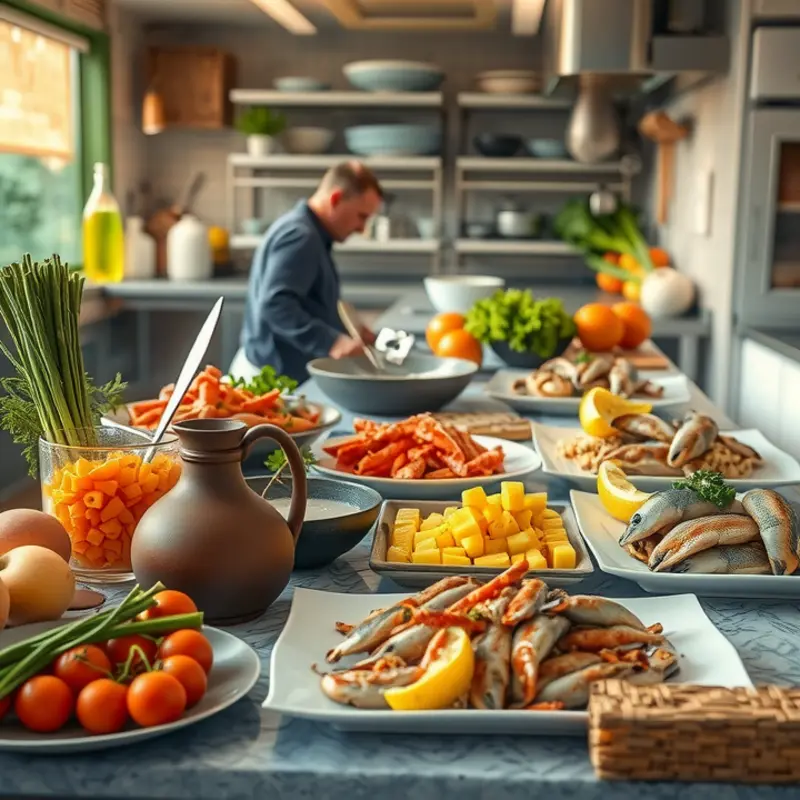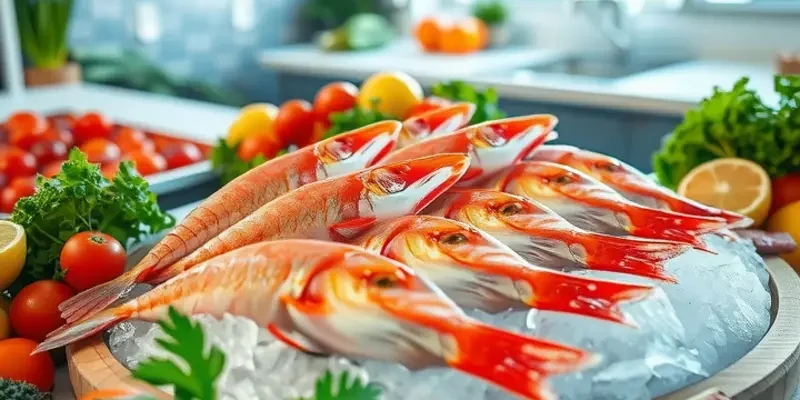Handling seafood requires special care to ensure safety and freshness. By understanding proper storage techniques and management practices, you can enjoy seafood not only while minimizing waste but also by maximizing flavor and safety. This guide aims to equip you with the actionable tips and insights you need for safe seafood handling in your kitchen.
Understanding Seafood Storage Basics

Storing seafood properly is crucial for maintaining its freshness, safety, and overall quality. The first step in ensuring that your seafood remains delectable and safe to eat is grasping the importance of temperature control. Fresh seafood should be kept cold, ideally at a temperature between 32°F and 38°F. Utilizing an appliance thermometer can help ensure that your refrigerator is operating within this safe range.
When it comes to packaging, moisture is the enemy. Using airtight containers or tightly wrapping seafood in plastic or aluminum foil can help prevent air exposure, which leads to premature spoilage. For fresh seafood, you can place the wrapped package on ice in the fridge to maintain the optimal temperature. However, be sure to place a drip tray beneath to catch any melting water and prevent contamination.
For frozen seafood, maintaining a consistent temperature of 0°F or lower is essential. Freeze seafood as soon as possible upon purchasing if you do not plan to consume it within two days to preserve its texture and taste. Vacuum sealing is an excellent method for retaining flavor and preventing freezer burn. This technique significantly reduces oxygen exposure, extending the shelf life of your seafood.
Proper storage of cooked seafood follows similar principles. Allow the seafood to cool down to room temperature before refrigerating, but do not leave it out for more than two hours to avoid bacterial growth. Store it in an airtight container and consume it within three to four days. For longer preservation, freezing cooked seafood can extend its freshness for up to three months. Reheating should be done gently to avoid overcooking, which can ruin the seafood’s delicate texture.
Minimizing waste is also an essential component of seafood storage. Plan your purchases and prepare to use perishable seafood quickly. Buying seafood in bulk can seem economical, but it may lead to waste if not properly managed. Instead, consider practical ingredient batching techniques to portion out seafood in meal-sized quantities before freezing. This ensures that you use only what you need, helping to reduce spoilage and waste.
Incorporating these seafood storage basics into your routine will not only safeguard against foodborne illnesses but also preserve the natural flavors and nutrients of the seafood you enjoy. By mastering these practices, you’ll set yourself up for culinary success, bringing the delights of the sea to your table with confidence.
Reducing Waste and Optimizing Seafood Usage

Efficiently utilizing seafood and reducing waste starts long before the cooking process. Thoughtful meal planning is vital to making the most of your purchase. When shopping, choose seafood that complements your meal plans. Quantities should match the number of servings you intend to prepare. Start with recipes you’re comfortable with, as familiarity often results in less waste due to cooking or timing errors. This way, you ensure you have enough seafood for your planned meal while minimizing surplus.
Leftovers can often accumulate, but creativity in handling them can significantly cut down waste. Transform leftover seafood into entirely new dishes. For instance, extra grilled salmon can seamlessly turn into a delightful salad topping or a savory salmon cake. Similarly, shrimp leftovers can elevate a pasta dish or be incorporated into a stir-fry. With such adaptations, every bit of seafood contributes to multiple meals, maximizing flavor and minimizing waste.
Understanding correct cooking techniques also plays a significant role in reducing waste. Overcooking can ruin both texture and flavor, leading to discarded food. Take time to familiarize yourself with optimal cooking times and temperatures for different types of seafood. Grilling, baking, and steaming each bring out distinct flavors and textures, but each must be approached with precision. Mastery over these techniques ensures that every morsel of seafood is cooked to perfection, retaining its full taste and nutritional benefits.
It’s also important to consider repurposing unused seafood efficiently. Fish bones, shells, and even heads can provide the foundation for a rich seafood stock, infusing flavor into soups and sauces. Utilizing practical ingredient batching can further refine your approach: plan to cook large batches and freeze portions for later use, preserving both the food and its flavor.
Additionally, integrate seafood with common household ingredients to prolong its usability. Lemon, dill, and capers are excellent companions to many seafood dishes and can refresh leftovers in creative ways. Such ingredient pairings can breathe new life into dishes without the need for additional shopping trips, further reducing potential waste.
Ultimately, an organized approach to seafood usage not only reduces waste but also enhances culinary creativity and meal satisfaction. By tailoring your purchases to fit meal plans, employing innovative ways to use leftovers, and mastering cooking techniques, you’ll ensure that every piece of seafood contributes fully to a delicious and eco-conscious meal experience.
Final words
Mastering proper seafood handling is crucial for enjoying delicious meals while ensuring safety and reducing waste at home. By understanding the basics of seafood storage and implementation of effective waste reduction strategies, you can elevate your culinary practices. Emphasizing quality, safety, and sustainability not only benefits your health but also contributes positively to the environment. Equip yourself with this knowledge and enjoy the rich flavors and versatility that seafood has to offer while being mindful of food management in your kitchen.







